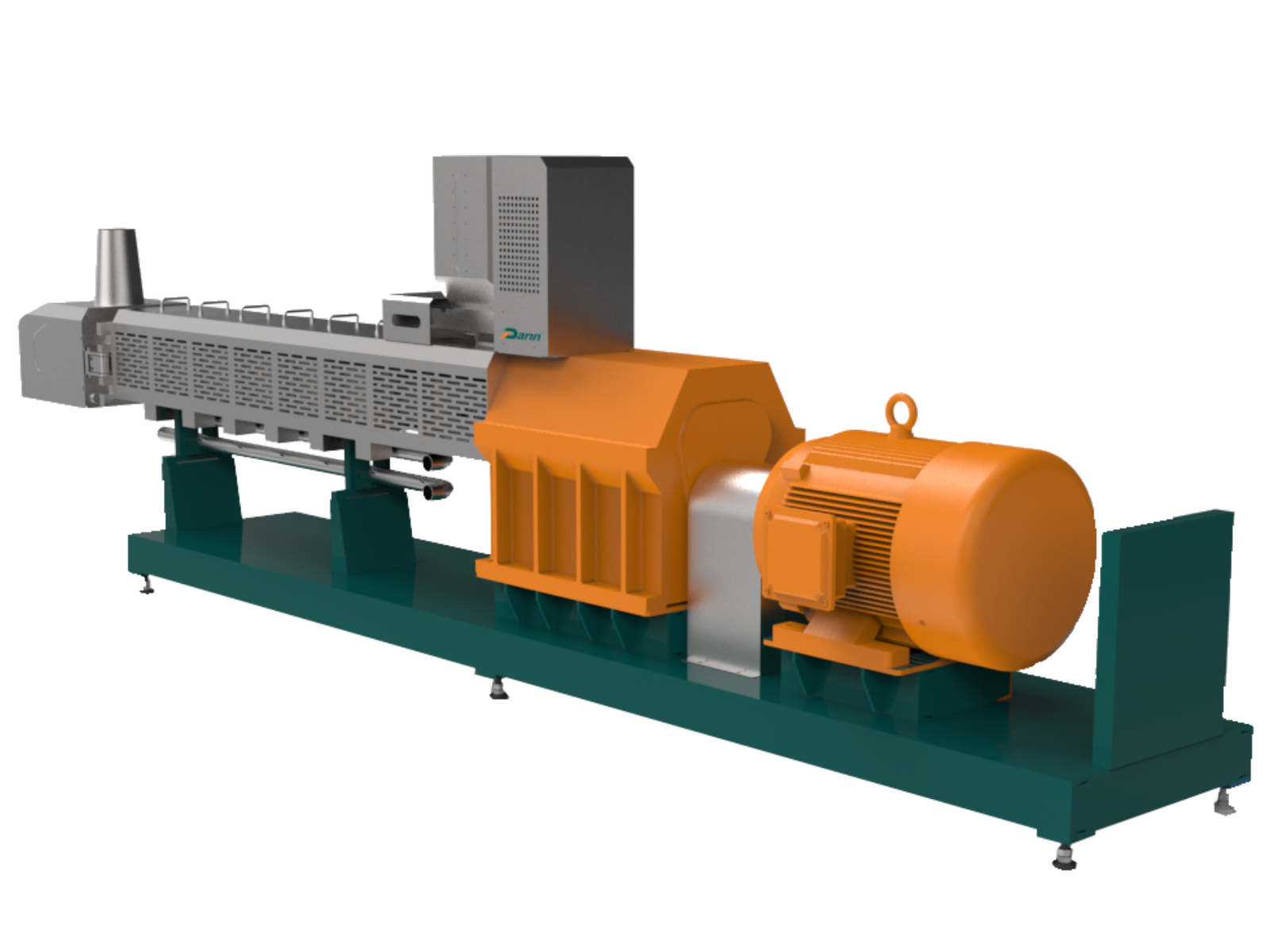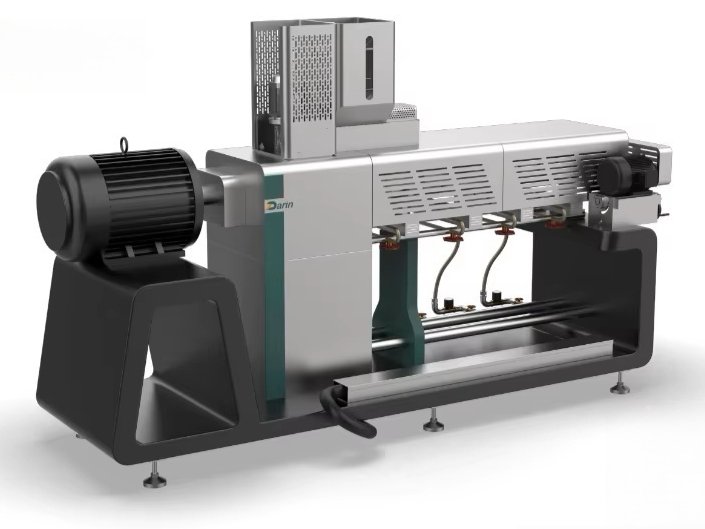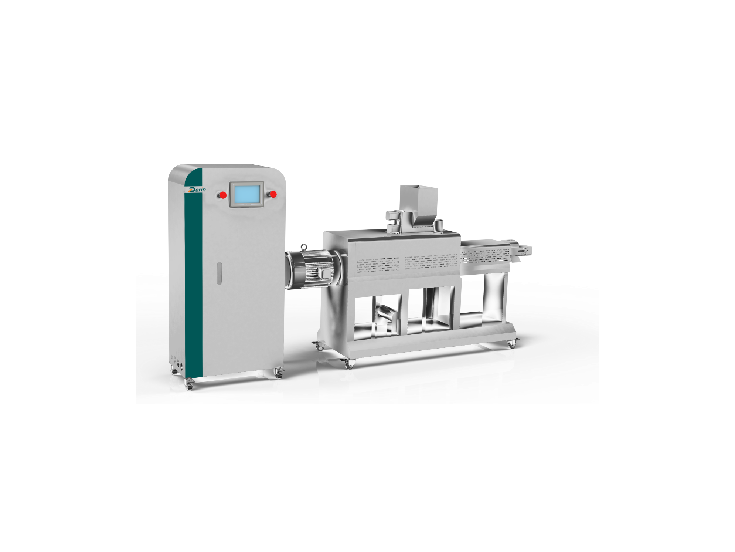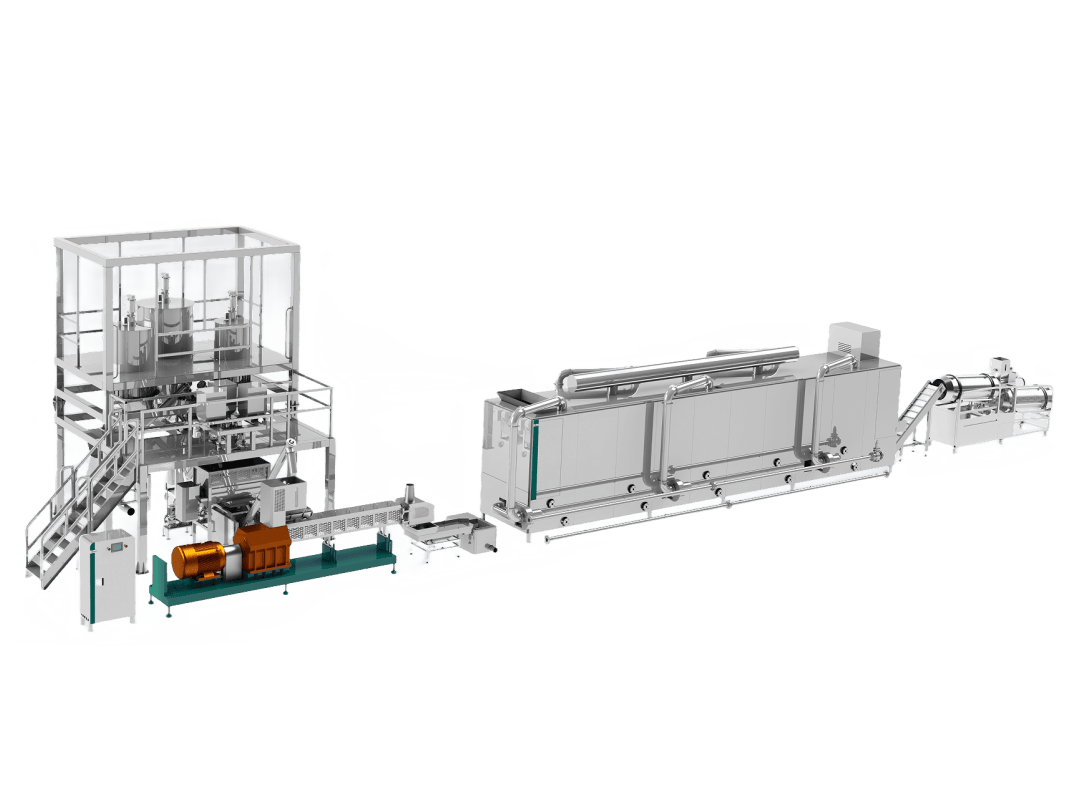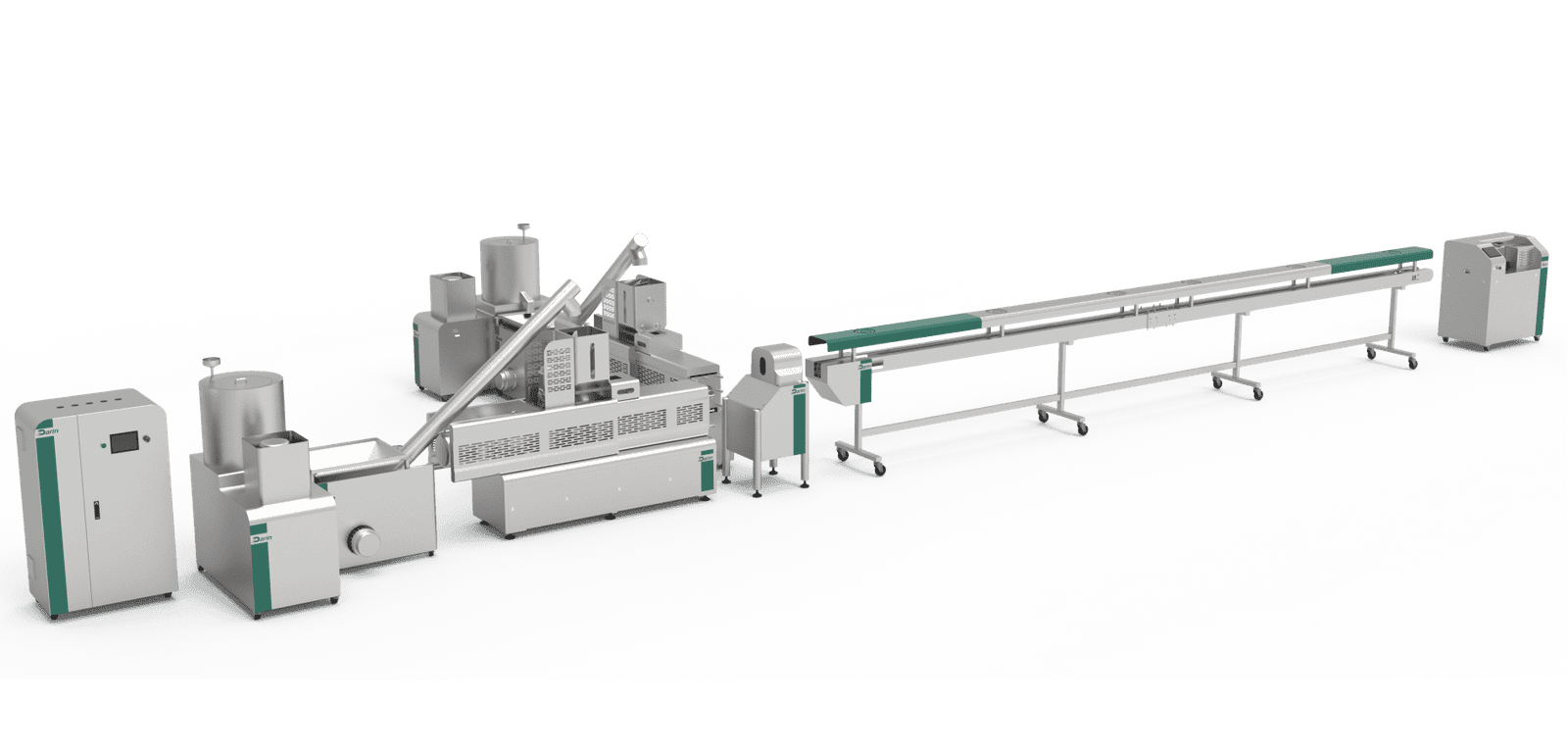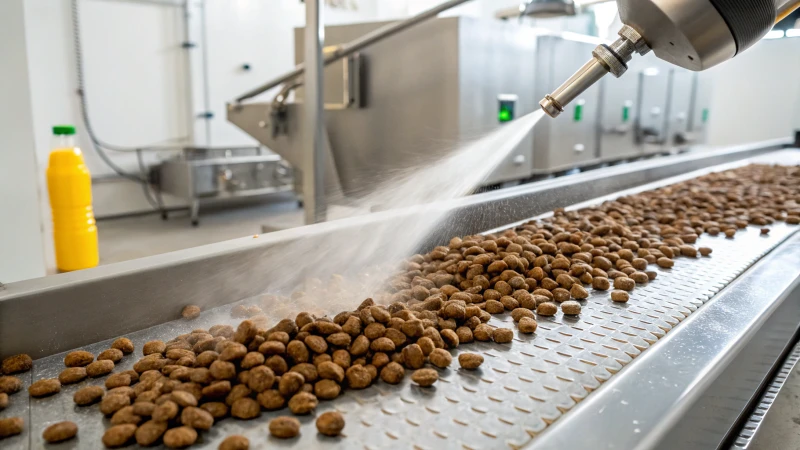
In the pet food manufacturing industry, extruders are the heart of production—but when they malfunction, the whole line can suffer. From inconsistent product quality to complete production halts, common extruder issues can compromise efficiency, increase waste, and escalate costs. Left unresolved, these problems impact both product consistency and business profitability. Fortunately, with proper understanding and strategic solutions, manufacturers can prevent or quickly resolve these issues to ensure reliable and high-quality pet food production.
The most common issues with pet food extruders include inconsistent moisture control, die blockage, screw wear, uneven product expansion, motor overload, and temperature regulation problems. Solving these involves regular maintenance, proper screw configuration, timely component replacement, precise control of process parameters, and the use of high-quality raw materials. Optimizing upstream and downstream processes also plays a crucial role in achieving consistency and efficiency.
Understanding the root causes of extruder problems is essential for maintaining a high-performing production line. In this article, we’ll dive into the technical causes, real-world data, and expert troubleshooting strategies that manufacturers should apply to tackle extruder issues head-on and boost productivity.
Screw wear is the leading cause of poor product consistency in pet food extrusion.True
Worn screws alter material flow and shear force, leading to inconsistent texture and cooking. Regular inspection and replacement help maintain consistent output.
Overfeeding the extruder can improve production capacity.False
Overfeeding causes pressure imbalances, motor strain, and inconsistent product quality, reducing overall efficiency.
Understanding the Core Problems of Pet Food Extruders
1. Moisture Inconsistency and Product Texture Deviation
Moisture levels are critical for starch gelatinization, product texture, and shaping. Fluctuating feed moisture, barrel steam pressure, or poor water injection control can cause hard, undercooked kibbles or mushy overcooked pellets.
Key Data Table: Effects of Moisture Variations on Pet Food Texture
| Moisture Content (%) | Final Product Texture | Common Issue | Recommended Fix |
|---|---|---|---|
| < 20% | Hard, under-expanded kibble | Under-cooked, brittle | Increase water/steam input |
| 22–25% | Ideal expansion & density | None | Maintain optimal process control |
| > 27% | Sticky, soft, overcooked | Wet mass, poor shape | Reduce water injection, improve venting |
Solution: Install inline moisture analyzers, automate water injection, and regularly calibrate flow meters. Monitor upstream preconditioning to ensure accurate moisture input.
2. Die Blockage and Flow Restriction
Die holes can become blocked by fiber buildup, inadequate cleaning, or improper ingredient particle size, resulting in pressure spikes, product shape irregularity, or sudden shutdown.
Troubleshooting Tip: Use real-time pressure sensors at the die head to detect early blockage formation. Dies should be cleaned during every shift, especially when switching formulations with sticky binders or high-fiber grains.
Preventive Maintenance Schedule Table
| Component | Maintenance Frequency | Procedure Description |
|---|---|---|
| Die face | Every 8 hours | Clean with brass brushes, inspect for wear |
| Knife mechanism | Daily | Sharpen or replace dull blades |
| Feed port/screw | Weekly | Inspect for residue buildup |
3. Screw Wear and Shear Force Reduction
The extruder screw is responsible for mixing, compressing, and cooking the feed. With time, wear from abrasive materials (bone meal, fiber) causes loss in shear force and inconsistent cooking, visible in color and texture.
Real Case Study: One pet food factory in Europe noted a 22% increase in rejected batches due to low density and pale appearance, traced back to screw wear after 18 months of continuous operation.
Solution: Choose wear-resistant alloys for screw manufacturing, such as nitrided steel or tungsten carbide coatings. Implement a log system to track screw lifespan under different formulations.
4. Temperature Control Instability
Barrel temperature and steam injection are vital for starch gelatinization and protein denaturation. Faulty sensors, poor insulation, or damaged heating elements lead to undercooking or burnt product.
Common Temperature-Related Issues Chart
| Temperature Deviation | Visible Symptoms | Root Cause | Solution |
|---|---|---|---|
| -10°C or more | Under-expanded, pale kibble | Faulty thermocouple | Replace and recalibrate temperature probes |
| +15°C or more | Scorching, burnt odor | Heater malfunction, blockage | Clean heating jacket, inspect wiring |
5. Overfeeding and Motor Overload
Feeding too much material into the extruder can cause torque overload, belt slippage, or motor failure. This often occurs due to inconsistent preconditioner flow or poorly controlled auger systems.
Monitoring Tip: Use variable frequency drives (VFDs) and torque limiters to control feed rates in real time. Set alarms for motor load deviations above 90%.
6. Product Expansion Inconsistency
Expansion depends on moisture, die pressure, temperature, and screw speed. Inconsistent expansion leads to poor aesthetics, density variation, and poor shelf-life due to uneven drying.
Expansion Factor Influence Table
| Parameter | Higher Value Leads To | Lower Value Leads To |
|---|---|---|
| Moisture (%) | Less expansion | More expansion |
| Barrel pressure (bar) | More expansion | Less expansion |
| Screw speed (rpm) | Finer texture, more puff | Coarser, dense texture |
Engineering Solutions: How to Design for Fewer Extruder Problems
Selecting the Right Extruder Configuration
- Single-screw extruders are cost-effective and suitable for basic formulations.
- Twin-screw extruders offer superior mixing, flexibility, and better handling of complex recipes.
Key Configuration Decisions:
- Screw L/D ratio (Length to Diameter): Higher for better cooking and mixing.
- Die design: Must match particle size, recipe type, and product shape.
- Cutter speed: Affects kibble length and uniformity.
Automation and Smart Monitoring Systems
- SCADA systems and PLC-based controls help monitor temperature, torque, moisture, and motor load.
- Edge AI systems can detect anomalies and optimize in real-time.
Chart: Benefits of Automation in Extruder Operation
| Feature | Benefit Achieved |
|---|---|
| Automatic feedback loops | Real-time adjustment of process variables |
| Historical data analysis | Predictive maintenance and QC |
| IoT integration | Remote monitoring and efficiency logging |
Raw Material Handling for Extruder Health
- Maintain consistent particle size (ideally <600 microns)
- Pre-blend ingredients to reduce localized clumping
- Avoid high-fat inputs in initial feed zone—can lead to slippage
Final Thoughts
Efficient, reliable operation of pet food extruders depends on a well-maintained system, a deep understanding of process variables, and strategic process control. By identifying the core causes of common extruder issues—like moisture imbalance, screw wear, or die blockage—and applying targeted solutions, manufacturers can dramatically improve product quality, reduce downtime, and extend the lifespan of their equipment. Investing in smart monitoring and proactive maintenance is no longer optional in a competitive industry driven by precision and productivity.
Ready to Solve Your Extrusion Challenges?
If you're facing pet food extruder problems or planning to optimize your production line, contact our engineering team today. We offer professional consultations, custom extruder configurations, spare parts, and complete turnkey solutions tailored for your factory needs. Let’s make your production more efficient, consistent, and profitable—together.
FAQ
Q1: What are the most common issues with pet food extruders?
A1: Common issues with pet food extruders include inconsistent product texture, poor expansion, high energy consumption, equipment overheating, and frequent clogging. These problems can result from improper screw configuration, wear and tear, inadequate moisture content, or incorrect raw material formulations.
Q2: How can I fix poor product consistency from my pet food extruder?
A2: To address poor product consistency, adjust the moisture and fat levels in the input mix, recalibrate temperature and pressure settings, and inspect the screw configuration. Using high-quality raw materials and ensuring regular cleaning and maintenance also improves consistency.
Q3: Why does my pet food extruder keep clogging?
A3: Clogging is often due to improper feeding rates, high viscosity ingredients, or foreign material contamination. Clean the die and screws regularly, check for worn-out components, and ensure that the input materials are finely ground and properly blended.
Q4: How do I reduce energy consumption in pet food extrusion?
A4: Optimize screw design, maintain proper lubrication, and ensure efficient heating control. Use energy-efficient motors and pre-condition raw materials to reduce the energy load on the extruder. Routine maintenance of mechanical parts also improves energy efficiency.
Q5: Is regular maintenance necessary for pet food extruders?
A5: Yes, regular maintenance is crucial. It prevents component failure, maintains consistent production quality, and extends equipment lifespan. Maintenance includes checking wear parts like screws and barrels, monitoring temperature and pressure systems, and ensuring proper lubrication.
FAQ Schema Markup
{
"@context": "https://schema.org",
"@type": "FAQPage",
"mainEntity": [
{
"@type": "Question",
"name": "What are the most common issues with pet food extruders?",
"acceptedAnswer": {
"@type": "Answer",
"text": "Common issues include inconsistent texture, poor expansion, high energy use, overheating, and clogging—often caused by material or equipment faults."
}
},
{
"@type": "Question",
"name": "How can I fix poor product consistency from my pet food extruder?",
"acceptedAnswer": {
"@type": "Answer",
"text": "Adjust moisture and fat levels, recalibrate settings, inspect the screw system, and use quality raw materials for improved consistency."
}
},
{
"@type": "Question",
"name": "Why does my pet food extruder keep clogging?",
"acceptedAnswer": {
"@type": "Answer",
"text": "Clogs are typically due to feed rates, material properties, or foreign objects. Clean and inspect parts regularly and use well-prepared input materials."
}
},
{
"@type": "Question",
"name": "How do I reduce energy consumption in pet food extrusion?",
"acceptedAnswer": {
"@type": "Answer",
"text": "Improve energy use by optimizing screw design, maintaining lubrication, using efficient motors, and pre-conditioning ingredients."
}
},
{
"@type": "Question",
"name": "Is regular maintenance necessary for pet food extruders?",
"acceptedAnswer": {
"@type": "Answer",
"text": "Yes, it ensures consistent quality, reduces downtime, and extends equipment life by preventing mechanical issues."
}
}
]
}References
- Pet Food Processing Equipment Troubleshooting Guide – https://www.petfoodindustry.com/articles/9973 – Pet Food Industry
- Common Extrusion Problems and Solutions – https://www.extru-techinc.com/articles/troubleshooting – Extru-Tech Inc.
- Troubleshooting Extrusion Issues – https://www.spe.org/publications/tech-papers/troubleshooting-extrusion – Society of Plastics Engineers
- Understanding Extruder Performance – https://www.feedstrategy.com/pet-food/article/15443904 – Feed Strategy
- Pet Food Extrusion Overview – https://www.ahlstrom-munksjo.com/Insights/pet-food-extrusion-guide – Ahlstrom-Munksjö
- Guide to Extruder Maintenance – https://www.clextral.com/en/resources/technical-papers – Clextral
- Moisture and Temperature in Extrusion – https://www.allaboutfeed.net/processing/extrusion-impact-moisture-temp – All About Feed
- Energy Efficiency in Feed Manufacturing – https://www.agricultureandfood.com/articles/energy-efficiency-feed – Agriculture and Food
- Screw Configuration Tips for Extruders – https://www.wenger.com/news/screw-configuration – Wenger Manufacturing
- Equipment Maintenance Best Practices – https://www.fao.org/documents/maintenance-guide-feed-processing – Food and Agriculture Organization (FAO)


